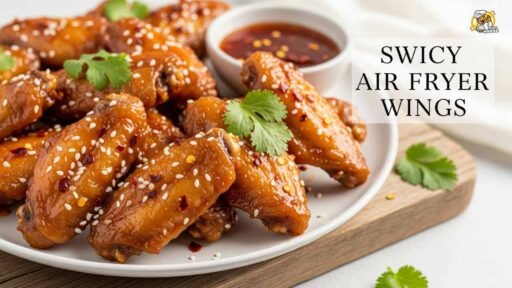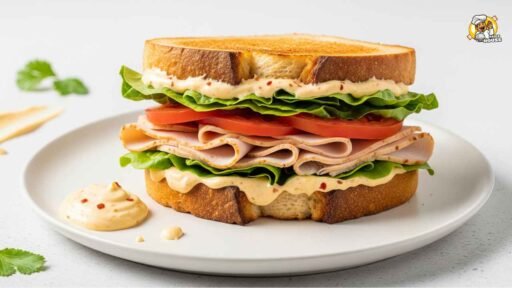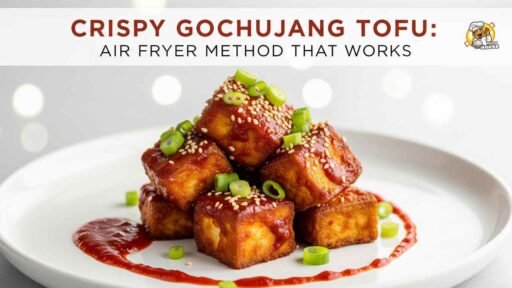Air fryers have crossed from fad to fixture, with nearly 60% of U.S. households owning one. A penetration that changes how weeknight meals, game-day spreads, and flavor trends move through kitchens and retail shelves alike. At the same time, Americans are poised to devour well over a billion chicken wings on big football weekends, 1.47 billion by one recent count, so the runway for wing innovation is wide and getting wider. Here’s the thing: the hottest flavor trend in that pile of wings is “swicy,” the sweet-heat lane that’s driving sauces, grocery resets, and even investor chatter, and it’s not slowing down anytime soon.
Call it consumer pragmatism or palate math, more than 80% of consumers enjoy spicy foods, yet a meaningful slice is wary of straight-up heat, so swicy gives mass-market permission to play with spice without the burn. That’s an opening for flavor makers like McCormick to frame annual forecasts and platform new blends, for appliance leaders like SharkNinja to ride at-home cooking momentum, and for retailers to push hot honey, gochujang, and chili crunch into the everyday cart.
The Data
-
Nearly 60% of U.S. households own an air fryer, according to an executive at Nestlé cited by CNBC, underscoring the appliance’s mainstream adoption.
-
The National Chicken Council projects Americans will consume 1.47 billion wings around the Big Game, signaling durable cultural demand that elevates wing formats—and sauces.
-
According to Daymon’s March 2024 flavor study, 84% of consumers eat spicy food, and 53% of Gen Z prefer “swicy,” defining a center-lane heat profile that retailers and brands can scale.
Quick Swicy Snapshot
Swicy pairs honey-like sweetness with chili-forward depth, think hot honey, gochujang, and spicy garlic to create medium heat that’s craveable, sessionable, and broadly accessible. Health-wise, air frying helps reduce oil use and lowers fat versus deep frying, which feeds the “better-for-you” narrative even when the flavor leans indulgent. For food safety, wings should hit an internal temperature of 165°F before serving; measure at the thickest part without touching the bone, and don’t skip this step.
Swicy Air Fryer Wings: Sticky Heat Without the Burn

Ingredients and Setup
This recipe leans on pantry staples and the flavors powering the swicy boom—hot honey for gloss and sweetness, gochujang for chili depth and umami, and a clean soy-vinegar backbone for balance. Air frying cuts oil but keeps crisp, thanks to fast-moving convection heat that mimics frying with far less fat and fewer acrylamides than deep-frying—nice on the health ledger, even on wing night. The only non-negotiable is food safety: plan to verify doneness at 165°F, the USDA-backed internal temperature for poultry, wings included.
-
2 to 2.5 pounds of chicken wings, flats, and drumettes separated if needed, patted very dry to maximize crispness during air frying.
-
2 heaping tablespoons gochujang (Korean chili paste), the swicy backbone that anchors heat without overwhelming burn.
-
3 tablespoons hot honey (or regular honey with a pinch of chili flakes) for sticky shine and round sweetness.
-
2 tablespoons low-sodium soy sauce for salinity and body to keep sauces from tasting thin after air-frying.
-
1 tablespoon rice vinegar for acidity that brightens and balances the sweet-heat equation.
-
2 teaspoons grated fresh garlic and 1 teaspoon grated ginger for an aromatic lift that supports both honey and chili.
-
1 teaspoon neutral oil to help the sauce cling; the air fryer does the rest without a vat of oil.
-
Optional: ½ teaspoon gochugaru (Korean chili flakes) or a dash of chili crunch for a final glossy, crunchy finish.
-
Kosher salt and black pepper to season the wings before cooking, keeping the sauce in the spotlight.
-
To serve: toasted sesame seeds and thinly sliced scallions, which play well with gochujang’s sweet-savory profile.
A quick note: air frying is not a magic wand, but it does cut oil demand and may reduce certain harmful compounds compared with deep frying, which sits well with modern, health-leaning kitchens. Still, the meat must hit 165°F—doneness is flavor security as much as safety.
Mix The Swicy Glaze
In a small bowl, whisk gochujang, hot honey, soy sauce, rice vinegar, garlic, ginger, and oil until shiny and cohesive—it should ribbon off a spoon and taste medium-hot with a sweet trail. Taste and adjust: a little more honey if leaning spicy, a splash more vinegar if leaning sweet, knowing air fryer heat will concentrate flavors slightly. Here’s the thing: swicy sits in a Goldilocks zone where the sweetness gives spice somewhere to land, which is why the profile resonates with a broad base of diners. If a louder chili crunch finish is the goal, hold back on gochugaru now and add the crunchy chili oil after cooking so it keeps its texture.
The boom of hot honey and gochujang on mainstream menus is not an accident—consumers are signaling they want familiar-but-bolder, and this glaze checks both boxes. It’s also modular: swap in tamarind-forward blends or pepper-forward seasonings from annual flavor forecasts to push tang or fruit into the background without losing balance.
Prep the wings for crisp
Pat the wings very dry with paper towels—surface dryness is step one for a clean, blistered skin in a high-velocity air fryer chamber. Season lightly with salt and pepper, then let the wings rest for 10 to 15 minutes while the air fryer preheats to 400°F, which gives the salt a head start on the skin. Resist tossing the wings in sauce now; glazing too early can promote scorching sugars before the chicken reaches a safe temperature. A two-phase approach—cook, then glaze—lets the skin crisp first and the sauce lacquer second, producing that sticky, photogenic sheen.
Consider the psychology: crispy-first, glaze-second feels like restaurant craft at home, which is part of why air fryers won the weeknight, weekend, and social feed all at once. The result nods to classic buffalo flow but lands firmly in the swicy frame that’s trending across retail and restaurants.
Air-fry in stages
Arrange wings in a single layer in the air fryer basket without crowding; work in batches so forced air can circulate and crisp the skin rather than steam it. Cook at 400°F for about 10 minutes, flip, and cook another 8 to 10 minutes, then start checking the thickest pieces with an instant-read thermometer. The safety line is 165°F internal temperature for poultry, measured away from bone; pull pieces that hit the mark and let thicker ones go 2 to 3 minutes more. This phased pull avoids overcooking the early finishers while ensuring every piece clears the safety threshold before saucing.
While the final batch finishes, warm the swicy glaze in a small saucepan over low heat until it barely simmers; gentle heat loosens the texture for immediate clinging power. Don’t thicken too far—the glaze should coat a spoon and stay pourable, since wings will continue to reduce surface moisture during the toss. For those counting macros, remember the headline benefit here is less oil, not zero sugar, so balance the portion plan with the glaze load. Sources say this is where taste and nutrition try to share a lane, and swicy gives both a decent shot.
Toss, glaze, and finish
In a large bowl, toss hot wings with half the warm glaze, then rest 2 minutes so the sauce sets to a shiny coat. Add remaining glaze to taste and toss again; the second pass sticks harder now that the first layer has cooled and clung. Shower with sesame seeds and scallions, and if desired, finish with a spoon of chili crunch or a pinch of gochugaru for a spark and snap that reads well on the plate. Serve immediately, and yes, napkins are non-negotiable; swicy is sticky by design.
Air frying’s low-oil crisp meets swicy’s sweet-heat balance, which is why this style is moving fast across menus, feeds, and grocery aisles. The beauty is scalability—wing night for two or a playoff platter both work with the same core method and a double batch of glaze. For food safety purists, a final instant-read check ensures every last piece sits above 165°F, no exceptions.
Shortcuts, swaps, and scale
-
Appliance edge: SharkNinja underscores its category leadership on earnings calls and presentations, and its dual-drawer formats can speed batch cooking without sacrificing crispness.
-
Flavor levers: McCormick’s forecast callouts, including tamarind and pepper-forward blends, slot neatly into the swicy lane—add a teaspoon to the glaze for a tangy or smoky twist.
-
Pantry insurance: With periodic Sriracha shortages tied to pepper supply and drought, keep chili crunch, sambal oelek, or other chili sauces on deck for a backup spicy-sweet glaze.
The People
“A former executive told Forbes” is the kind of quote readers expect here, but the signal is clearer when listening to the flavor strategists mapping real adoption. “Swicy, with its heat and its sweet, helps create more complex sensory experiences in our food and drink consumption,” said Chelsey Capps, director of thought leadership at Daymon, who also notes that one in five shoppers fear foods that skew too spicy—hence swicy’s mass appeal. Think of it as culinary diplomacy: hot honey, gochujang, and spicy garlic give chefs a way to build boldness without alienating the cautious middle.
On the hardware side, SharkNinja’s leadership has been frank about category momentum, stating on a recent call that the company “already leads the air fryer market,” while rolling out new platforms to extend its hold. The translation is simple: air frying didn’t just win the social feed—it won market share, channel breadth, and product cadence. Investors heard the same signal in results that showed strong sales growth in 2024, and that performance feeds a broader thesis about at-home cooking being stickier than post-pandemic skeptics expected.
The Fallout
When millions of households can crisp wings with a teaspoon of oil, at-home wing nights rise, and casual dining must fight harder to justify a fry-basket premium. Analysts and retailers respond by leaning into sauces that sell—the hot sauce market continues to expand, and sweet-and-spicy SKUs are positioned to capture mainstream dollars and pantry permanence. Meanwhile, the swicy wave shifts procurement: grocers allocate more space to gochujang, hot honey, and chili crunch, and private label plays in that lane to capture value and margin.
But supply chain fragility is lesson one in condiment land, as Sriracha’s multi-year supply disruptions—from supplier disputes to drought in growing regions—have forced brand switching and kept price volatility in play. Another production pause in 2024 hammered home how climate and agricultural risk can tip a staple into scarcity, pushing consumers to alternatives and retailers to diversify assortments. This smells like a long-tail change rather than a blip—category growth with a rotating roster of “it” bottles depending on harvests and hedging.
For investors, the knock-on effect is uneven: appliance makers with product velocity and channel depth can keep compounding, while single-SKU condiment brands face a higher bar for risk management and pricing power. As for households, the air fryer’s health halo persists, with clinical guidance noting benefits like lower fat intake and fewer acrylamides versus deep frying, even if it’s not a free pass to ignore portion sizes. The cultural piece is obvious; with 1.47 billion wings moving on a single weekend, this remains America’s most influential “small format” protein, and swicy has the momentum to meet the moment.
Step-by-step effects beyond the kitchen
-
Restaurants: Faster LTO cycles and menu engineering toward medium heat, honey-chili glazes, and pepper-forward specials that carry mass appeal and Instagram shine.
-
Retailers: Secondary displays for hot honey and gochujang, cross-merchandised near wings, plus private label bets to hedge against brand-specific supply shocks.
-
Consumers: A durable shift toward air-fried “treat” foods at home, balancing cost, convenience, and perceived health in a way deep fryers can’t match.
A skeptical look at the spin
Corporate narratives love a health halo, and air fryers have earned real credit for reducing oil and certain harmful compounds compared with deep frying—but this is still fried-adjacent eating. The better framing is “less oil, same crunch,” not “healthy fried food,” a distinction that matters when a sweet glaze enters the chat. Likewise, swicy’s genius is accessibility, but that same middle-lane appeal can spawn lookalike products that blur into a sea of sticky-sweet heat without a point of view.
Investors should separate true innovation—like meaningful appliance form-factor changes and new heat-distribution tech—from packaged spin that re-labels the same hardware and sauce formats. And while hot sauce market projections look sturdy, drought-driven pepper volatility and single-source risk can still derail a plan in a hurry. It’s all fun and games until the jalapeños don’t ripen red.
The People, redux: chefs and shoppers
Flavor pros keep returning to a simple insight: swicy lowers the barrier to entry while delivering a sensory “pop,” especially for Gen Z shoppers who seek novelty that doesn’t punish. Daymon’s data shows the medium-heat sweet spot is where experimentation happens, and that’s why wings—already a national pastime—make an ideal delivery vehicle. For chefs, the tactic is clear: build a familiar base, layer chili and fruit-acid notes, and finish with texture so the bite lands, lingers, and invites another.
Home cooks, empowered by countertop convection and social recipes, look for repeatable wins, which swicy wings deliver in 30 minutes with minimal mess and no open pot of oil. It maps to real life: less splatter, less cleanup, faster plate time, and a flavor that plays to groups without leaving anyone out. Even better, the USDA’s simple 165°F rule means food safety is easy to communicate and routine to verify with an instant-read thermometer.
What it means for SharkNinja and everyone else
SharkNinja’s category share gains and revenue growth reflect a flywheel of design, channel reach, and timing—air fryers solved a real use case just as home cooking surged. The company emphasizes continued innovation and claims category leadership, which, if sustained, could keep drawing consumer energy into the countertop and away from dining rooms and delivery baskets. But competition and copycats are real, so the edge depends on true product differentiation, not just colorways and bundle swaps.
For flavor brands, swicy is a durable platform rather than a single SKU: hot honey variants, pepper blends, and fusion sauces can stack year after year without consumer fatigue if balance and texture stay front of mind. Retailers will keep calibrating sets around supply reliability to avoid another Sriracha cliff, lifting alternatives and private label where risk is lower. Net-net, the winner is the shopper who gets big flavors at home with fewer trade-offs on time, oil, and mess.
Closing thought
If swicy wings anchor America’s favorite party food while air fryers keep sprinting through households, will the next shortage or flavor-of-the-year force a reset, or will a stickier, sweeter middle keep winning both palates and portfolios?






